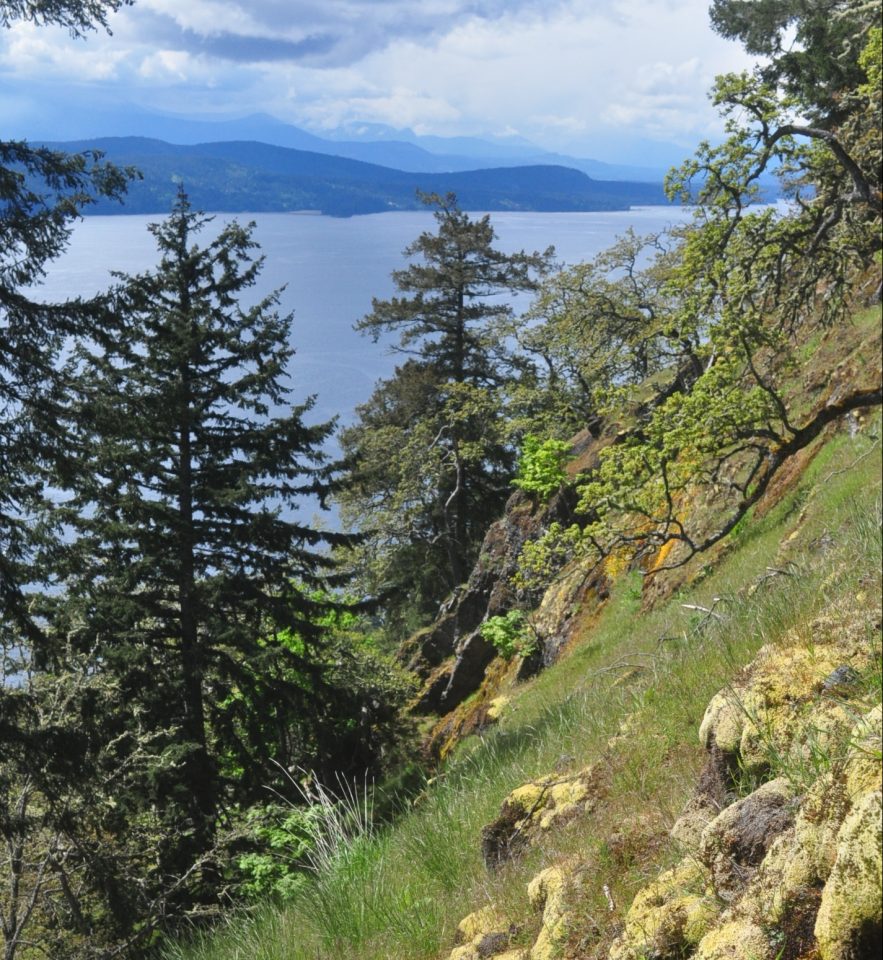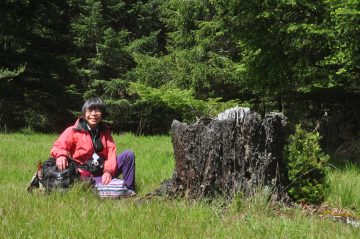
Galiano Island | Photo Credit: Andrew Simon
Bioblitz season is well underway and results are pouring in from Galiano Island, BC. Galiano is one of British Columbia’s Gulf Islands, and was originally inhabited by the Central Coast Salish people. The island hosts many species that have yet to be documented but Andrew Simon, curator of the Biodiversity Galiano Project, hopes to create a more comprehensive picture of the island. This year’s bioblitz enlisted more than 16 experts, to help document the island’s biodiversity. So far more than 600 species have been reported from the bioblitz, including over 50 species “new for Galiano”—one of which has never been recorded in Canada before.
Triquetrella californica, was identified by Olivia Lee, Collections Manager Of Lichens, Bryophytes, and Fungi at the Beaty Museum. Native to California, this will be the furthest north this moss species has been reported. More research will have to be done on how this species, currently ranked as Critically Imperiled (G1), got there.

Olivia Lee | Photo Credit: Andrew Simon
Sixteen species reported during the bioblitz were marked for conservation concern, which is one of the benefits of a bioblitz: more information can be gathered so that conservation can begin before it’s too late. Among the species at-risk recorded were the olive-sided flycatcher (Contopus cooperi), the narrow-leaved onion (Allium amplectens), the propertius duskywing (Erynnis propertius) and the stellar sea lion (Eumetopias jubatus). The hundreds of species identified by the many volunteers on this bioblitz will help researchers better understand the biodiversity of the Salish Sea area and hopefully help conservation efforts for Galiano’s species at-risk.
Meanwhile Andrew continues to add names to the list of species known to Galiano Island, which now numbers at over 2,600.
Interested in joining a bioblitz and learning more about biodiversity? Check out the events calendar on the Bioblitz Canada’s website and on the Parks Canada website for ones near you.
